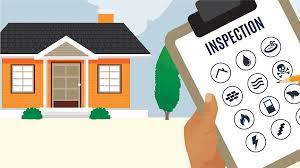What Is Home Inspection, and What are the Checks that it Covers?

Introduction
It’s not easy to buy or sell a house, especially if you’re a first-time buyer. But, it’s a turning point and a chance to increase financial equity. As a result, the moment you sign the papers for your first house will always be memorable. And before any money is exchanged, most buyers have a comprehensive home inspection to ensure everything goes as planned.
Home inspection: What does it mean?
A home inspection is a non-intrusive evaluation of the current state of a property, frequently done before purchase. A professional home inspector typically conducts home inspections, checking for malfunctions, necessary repairs, and other problems that must be resolved.
Like most Indians, you probably spent significant money, if not all of your savings, to purchase your apartment or villa. The issue is exacerbated if you share a home with parents and parents-in-law. Experience has taught us that no building, whether a tier-1 or tier-3 builder constructed, is immune to issues. There is a possibility that the floor tiles will leak water, the moist wooden flooring will sprout mushrooms, the door frames will warp, the electrical fixtures won’t work correctly, and the water pressure will drop below normal. Due to these issues, your time and hard-earned money will need to be invested more.
Before moving into your home, it would be advantageous to hire a service provider who can spot these issues. It is known as a home inspection.
Before making an offer on a home, prospective buyers must take a brief tour of the property to assess its condition. Although home inspections are usually associated with homebuyers, sellers can also ask for one before listing a house.
A qualified inspector is hired to physically inspect the house from the foundation to the roof and record the findings and opinions based on the objective criteria. A thorough home inspection can only be performed by a licensed inspector who is thoroughly knowledgeable about the systems of a home, including their construction, installation, and maintenance. To ensure all aspects of a home inspection are covered, an inspector uses an inspection checklist to direct them through the inspection process. The list also serves as the inspector’s checklist for reporting on the property’s condition. Finally, the inspector compiles findings and necessary recommendations in a written report.
Before a home inspection, what should you know?
A home inspection is necessary before buying a new house or selling an old one. A professional inspect the home during the home inspection to ensure it is safe, structurally sound, and not a money pit with a long list of hidden (but necessary) repairs.
Notably, a home inspection is typically not necessary. However, reading the fine print in your mortgage and purchase agreements is highly advised to see if a home inspection is required. Also, pay attention to the distinction between a home inspection and an appraisal. A professional is brought in to determine a home’s value through a home appraisal. Any issues later found are your responsibility if you choose not to have a home inspection performed as a buyer.
What does Home Inspection Cover?
The standards for inspections vary between states. However, the American Institute of Inspectors has Standards of Practice that specify what should be included in a home inspection.
Structural Elements: Crawlspace, foundation cracks, structural issues, indications of water infiltration, sagging or bowing in structure, floors and floor framing, walls, ceilings, stairs, drainage systems, and window alignment are among the structural components.
Foundation: Raised, slab, or cinder block foundations all impact the cost of hazard insurance. If foundational problems are overlooked during a home inspection, the price could reach $100,000.
Roof: The age, condition, and general structure of the top, as well as its gutters, shingles, downspouts, vents, flashings, skylights, chimneys, roof coverings, and roof penetrations.
Insulation and ventilation: Unfinished spaces, such as attics, crawlspaces, foundation areas, and exhaust systems, need to have their insulation and ventilation checked. Additionally, home inspectors search for evidence of water damage and ventilation fans.
Attic: If a roof leaks, there is probably water damage in the attic.
Interior: Checking the paint and wood trim, as well as the floors, walls, ceilings, stairs, and railings,
- Ceilings and walls must be level, straight, and devoid of leaks.
- When water seeps into wooden floors, and one side of a floorboard is raised, this is known as “cupping,” and it is hazardous.
Exterior: Siding, windows, exterior doors, flashing, trim, steps, patios, decks, driveways, drainage, adequate space between the ground and the siding, exterior paint or siding, condition of outdoor lighting, and electrical outlets,
- The home inspection report notes broken glass and specifies that windows and doors must latch securely.
- Paint-shut windows pose a security risk.
Grounds: Condition of driveways, fences, and sidewalks; septic drainage;
Basement: Stable foundation, walls, and floors with no apparent signs of water damage or infiltration
Garage: sturdy frame, windows, ceiling, garage door and openers, current electrical wiring, and functional outlets
HVAC: The condition of the furnace, air conditioner, and water heater, as well as the location of the thermostat
Fireplace: Lintels, damper doors, clean-out doors, and frames for the fireplace.
Plumbing: Plumbing includes a water heater, drains, waste and vent systems, main shutoff valves for the water and fuel supplies, and no broken or leaking pipes.
- A fundamental home inspection looks at the plumbing’s condition, efficiency, and safety. The water heater must be the right size for the residence.
Electrical: Visible wiring in good condition, conductors, service head and mast, electrical main, panel boards, grounding switches, light fixtures, outlets, operational circuit breakers, and fans.
- Each room must have a specific number of three-prong outlets, and visible wiring cannot have exposed splices. But these laws differ depending on the city and state.
Appliances: Ensure that free-standing and built-in appliances are operating correctly (stove, dishwasher, refrigerator, microwave, washer, dryer, etc.)
Safety Features: Fire alarms, carbon monoxide detectors, fire sprinklers, the condition of the stairs, handrails, and other safety features.
- Railings that are secured should be used to anchor stairs.
A qualified home inspection business will examine the following features of your home.
Civil Engineering Workmanship
An engineer will visit your home to check for construction flaws. They will inspect the area using a standard checklist, going through every room of the house as well as the exterior of the building. For example, the following items could be on the list.
- If the doors are correctly installed and flush against the walls.
- Whether the necessary number of screws are present on doors and windows.
- Whether or not the walls are wavy.
- If any debonded tiles could become hollow.
- Whether the balcony, bathroom, and other spaces meet the requirements.
Electrical Workmanship
In some cases, it’s possible that the line and neutral were switched. However, they will ensure that all points are supplied with power in a way that complies with the rules.
Plumbing Workmanship
Engineers will ensure that all fittings and fixtures have a water supply and pressure up to code. They will ensure that all the fittings and fixtures for the plumbing are present and functional. Additionally, they will examine the internal shaft and the area above the bathroom false ceilings.
The heights of the parapet walls, the distance between the barriers, and other safety requirements are checked to ensure they adhere to regulations.
Dampness engineers would use a thermal infrared camera to spot potential water seepage-related hotspots. These areas would be examined with moisture meters to confirm that the coolness is due to water and not a fantastic vent.
Safety
The heights of the parapet walls, the distance between the barriers, and other safety requirements are checked to ensure they adhere to regulations.
Dampness
Dampness engineers would use a thermal infrared camera to spot potential water seepage-related hotspots. These areas would be examined with moisture meters to confirm that the coolness is due to water and not a fantastic vent.
Living space or carpeting?
The RERA Act of 2017 established how to measure an apartment’s carpet area. First, the dimensions of the apartment and the rooms would be precisely measured by engineers using a laser measuring device. To determine the site, they would also measure the wall thickness by RERA requirements.
The person who requested the home inspection uses the report’s findings to decide whether to buy or sell the home. Although it describes the property’s current state, the report makes no promises about how long it will last or how well its systems will function. As a result, a home inspection may uncover troubling information about the property and protect a client from potential loss and annoyance.
A home inspector identifies the necessary repairs, maintenance requirements, and builder errors. The procedure lengthens the buying cycle and eventually enables the buyer or seller to make a more informed choice regarding the upcoming real estate purchase. To improve or restructure their properties before accepting an offer from a prospective buyer, sellers can benefit from this.
What a Home Inspection Doesn’t Include:
In general, home inspectors don’t focus on a few particular factors. These include lethal mold, pest control, swimming pools, asbestos, radon gas, home appliance venting systems, lead paint, air quality, alarm systems, code compliance, detached buildings, and lead paint (like a shed). Instead, in a home inspection, cosmetic flaws are frequently noted but don’t determine a pass or fail.
Searching for a Home Inspector
Consult with your friends, family, and reliable acquaintances who have recently bought or sold houses.
If all other options have failed, look for a home inspector through a recognized organization, such as the National Institute of Building Inspectors, the American Society of Home Inspectors, or the International Society of Certified Home Inspectors.
When the home is being inspected, should the buyer be present?
You must stay put during the inspection. You can use this to get questions or doubts answered. Going through the examination will be a positive experience. The owner avoids reading a technical visual report and is not understanding it.
The six typical issues that appear during a home inspection:
As one might anticipate, an inspection report will include cosmetic flaws like a cracked window pane or a chipped kitchen counter. Please remember, though, that minor issues rarely develop into significant problems. The issues that are concealed most frequently raise the most concern.
Problem#1: Tiles with holes- There shouldn’t be any hollowness when laying tiles, as per the Indian codes (BIS-NBC).
Problem#2: The balcony’s slopes and the bathroom’s wet area- The national code specifies the proper pitch for each damp room in a home because an improper or insufficient incline could cause drainage issues. The water may occasionally even enter the house.
Problem#3: Plumbing- One of the most critical and challenging aspects is plumbing. Plumbing errors may result in leaks. In addition, the pressure must be sufficient for the shower to function correctly.
Problem#4: Pests- Nobody enjoys an unexpected visitor, especially if they are a nuisance. Termites and other insects can seriously harm a building if not treated.
Problem#5: Mold- Mold growth could result from moisture. If damp spots are not found promptly, mold growth may result. Mold infestations smell terrible and cost a lot of money to remove.
Problem#6: Electrical fixtures- Electrical wiring issues like a lack of power supply, reversed polarity or failed earthing, missing junction boxes, and damaged plug points, to name a few, are frequently encountered by engineers.
Utilizing Home Inspection to Reduce Risks
A home inspection usually comes after a purchase agreement is finalized. A sales contract must therefore include the inspection contingency. It gives the seller enough time to ask for a home inspection and decide the sale based on the inspection findings.
For instance, depending on the material or cosmetic flaws in the property, a buyer might use the report’s assessment to proceed with the sale schedule. Additionally, a buyer can cancel the agreement, schedule a second home inspection, or demand repairs. In the event of a significant repair, a client may perform an additional examination to verify that the initially noted defects have been fixed.
Although a home inspection can reduce some risks involved in buying a property, it is not the only solution. A property insurance policy that protects buyers from repairs and maintenance costs could be a viable alternative. Instead of customizing home warranty policies to each home’s condition, the industry writes general home warranty policies.
What issues need to be resolved right away following a home inspection?
Legally, there is no such thing as a required repair following a home inspection. To make a house habitable, necessary repairs must be made. Home buyers must demand repairs that address significant health risks or safety risks. These may consist of:
- Water or mold damage
- Insect invasion
- Plumbing fixtures that leak
- Electrical or fire risks
- Large craters
- Code violations for buildings
- Trip risks
- Inoperative hardware
Conclusion
An average 2,000-square-foot home has over 160 problems. 30% of these have variations, and 60% of these are related to dampness. Avoid putting yourself through the pain of dealing with issues after moving into your home. It would be wise to hire a reputable company to inspect your home and provide a visual technical report.



